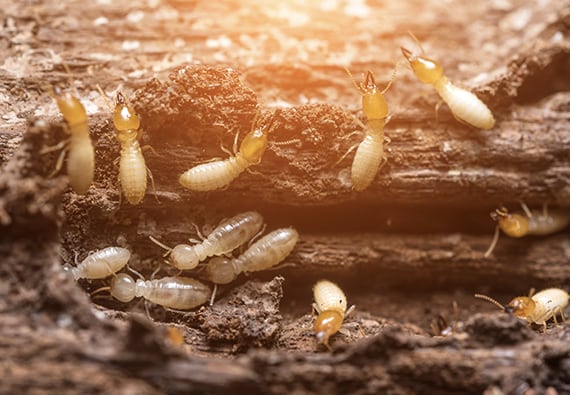A pest is any organism that is destructive to food, livestock and houses. Termites are one of the most annoying and worst pests in Australia and all around the world. Termites, like ants, are very organised with a high level of cooperation and differentiation based on labour. Not all types of termites are destructive; for instance, out of 350 species of termites in Australia, only 40 are dangerous and invasive. Termites can destroy houses, businesses and other structures. They cause more damage than other average pests. Hence, it is essential to know various termite treatment methods to tackle this menace.
Termites are primarily wood eaters, so they damage structures made of wood and abandoned buildings. The termite problem is more acute in Australia. Termites infest and damage almost one in five houses in Australia. Every year termites cause billions of dollars across the world in terms of structural damage.
Identification
Termites are very stealthy. One of the main problems with a termite infestation is a delayed identification. Termites operate in an underground tunnel, and if they are in the house, they live inside the walls, which makes it difficult to identify them.
Termites are classified into three groups – subterranean, dry wood and damp wood. The subterranean termites and the dry wood termites are the problematic ones. The most common pest termites in Australia are Coptotermes acinaciformis, Mastotermes darwiniensis (giant northern termite), Cryptotermes brevis (West Indian drywood termite), Schedorhinotermes intermedius, etc.
One can say that a house is infested with termites if it shows the following signs:
- Wood damage: Look for etching of woods and wood particles (Frass – powdered shavings) in and around the house.
- Mud tubes: Subterranean termites (the most common type of household termites) need soil and wood to thrive. Hence, one can try to identify these around the house.
- Swarmers: These look like flying ants; however, there are anatomical differences to identify young and female termites.
Prevention
- Annual inspection: an inspection by professionals can save a lot of money. The professional can assess the situation and suggest requisite termite treatment.
- Ensuring that no wood or timber is lying around in contact with the soil; if not, it could be a recipe for disaster.
- Hygiene: Keeping the house clean and dry with periodic cleaning can save a lot of time and money in the long run.
- Use a concrete foundation during the construction of the house.
- Fix any water leakages immediately. Termites prefer humid conditions. Therefore, any unnoticed water leakage can be a source of termite invasion.
Note: When found, termites should not be disturbed. With termites, the whole nest is treated as one.
Treatment
Termite treatment can be non-chemical and chemical.
- Non-chemical treatments include physical barriers, steel mesh and other biological control agents.
- Chemical treatments are the most prevalent methods to treat a termite infestation. Chemical treatments include conventional barrier treatment, termite baits and wood treatment. Different chemicals are used for different types of treatment.
- Conventional barrier treatment of liquid-soil treatment uses the following chemicals in combination as termiticides: Acetamiprid, Bifenthrin, Chlorantraniliprole, Cypermethrin, Fipronil, etc.
- Termite baits: It has contributed to the overall decrease in the use of insecticides. They are mainly slow-acting insecticides. For example, Diflubenzuron, Hexaflumuron, Lufenuron, etc.
- Borates are used for wood treatment in case of termite infestations.
Fortunately, termites do not cause any severe health problems to humans directly. They can cause mild allergy; the problem rests with property damage. A combination of routine inspections, proper treatment and protective measures can solve the problems caused by termites.




























